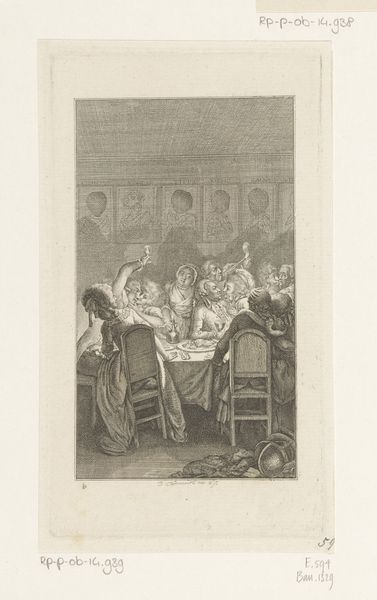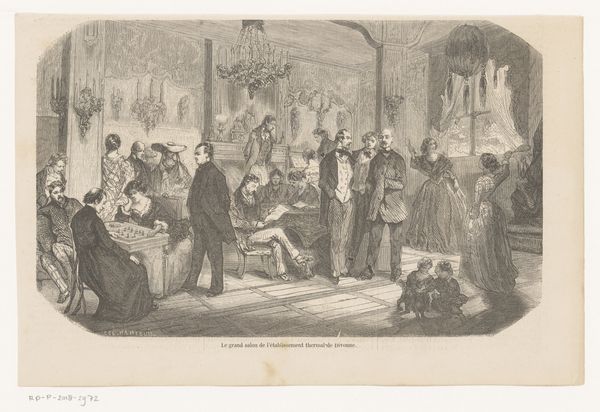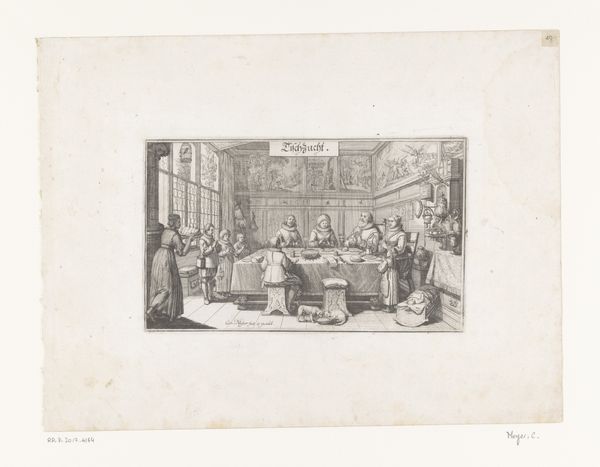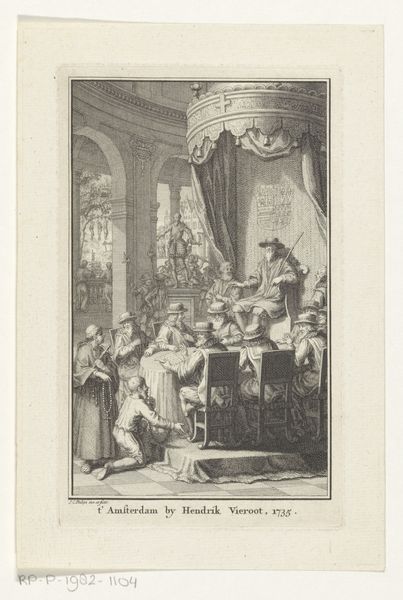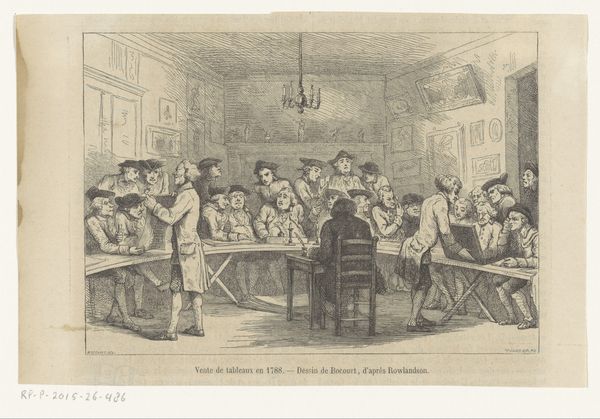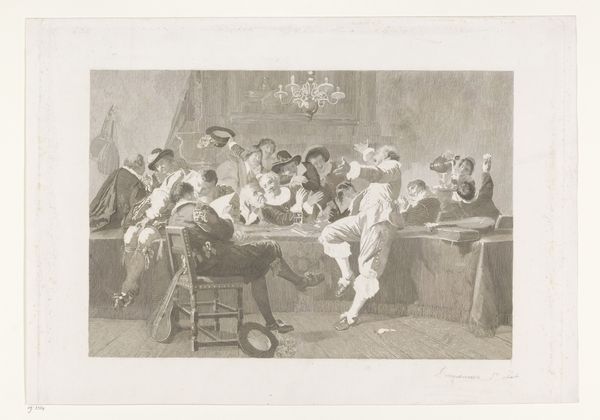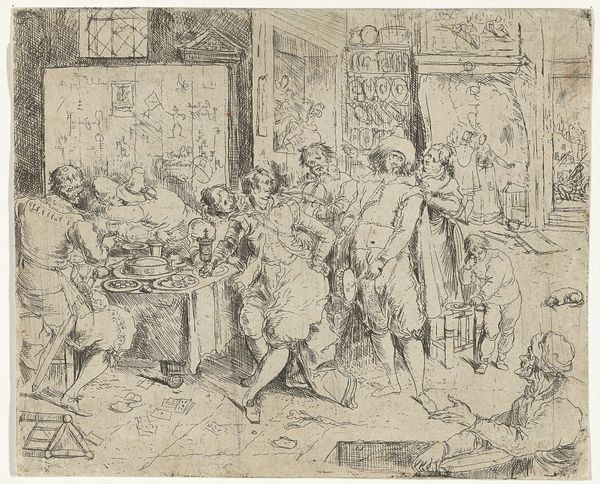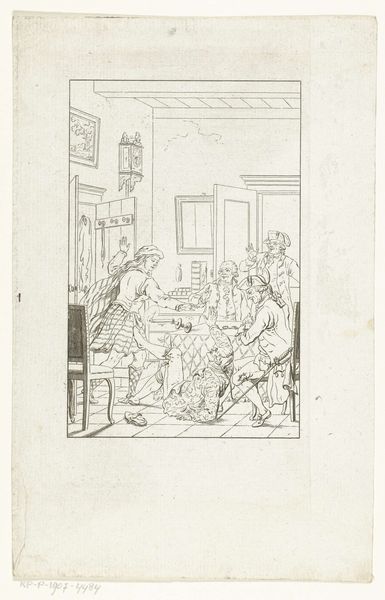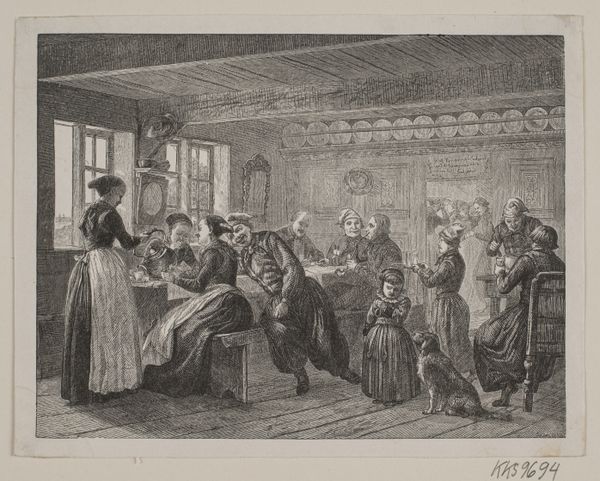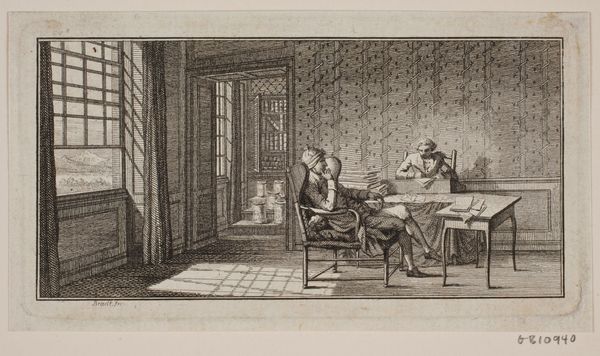
Dimensions: height 181 mm, width 270 mm
Copyright: Rijks Museum: Open Domain
Editor: Here we have Thomas Rowlandson’s etching, “Veiling van prenten,” or “Print Sale” from 1788. It depicts a crowded room of men examining prints, and I find the sheer number of figures somewhat overwhelming. How do you interpret this work? Curator: Notice how Rowlandson crams so many figures into this intimate setting. What do you make of all these gentlemen? It reminds me of how symbols within artworks tell stories about a society’s values. Each face is rendered with individual character, a caricature almost. Editor: Yes, a caricature! And that many people gathered so tightly must signify something. Is there a certain status conveyed in owning these prints at this time? Curator: Precisely! Print ownership reflected education, taste, and access to a burgeoning art market. These weren’t mere decorations, but signifiers of social standing. The layers of prints in the background adds another layer to this feeling, reflecting societal complexity. Editor: So, these prints become a symbolic language in themselves. I guess you’re saying the way the print sale is illustrated reveals underlying anxieties of the time? Curator: In a way, yes. This bustling auction scene also hints at the democratization of art ownership. Look at the expressions! Some seem genuinely engrossed; others seem almost…performative? What does that communicate, do you think? Editor: Maybe that purchasing art became a performance of taste. Something beyond personal enjoyment. Curator: Precisely! Seeing Rowlandson's work this way makes me rethink our current-day fascination with exclusivity within collecting. I didn't catch the layers of cultural symbolism before! Editor: Me neither! Seeing the symbolic undercurrent enriches the work so much more!
Comments
No comments
Be the first to comment and join the conversation on the ultimate creative platform.
